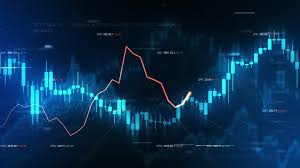In the realm of real estate and residence growth, sustainability has surfaced as a crucial aspect impacting on layout, construction, and marketability. As components era, they often experience functional obsolescence—a fall in importance because of out of date layout, characteristics, or solutions that not any longer meet modern standards or industry needs. Nevertheless, including eco friendly procedures and systems provides a engaging method to mitigate functional obsolescence. This post looks at how sustainability initiatives can revitalize properties, boost their long term value, and give rise to a far more sturdy and adaptive created environment.
Comprehending Practical Obsolescence
functional obsolescence real estate identifies areas of a property’s style, capabilities, or design that become significantly less desired or successful with time. This will involve obsolete building systems, unproductive energy usage, bad format designs, or absence of present day amenities. Contrary to physical wear and tear (that involves deterioration) or economical obsolescence (as a result of outside marketplace elements), useful obsolescence is intrinsic and needs proactive control to handle effectively.
The Increase of Sustainability in actual Property
Sustainability has received prominence across the real estate field, driven by enviromentally friendly problems, regulatory demands, and marketplace interest in energy-efficient, eco-pleasant qualities. Sustainable methods aim to lessen the enviromentally friendly influence of structures throughout their lifecycle, enhance occupant comfort and ease and well-getting, minimizing functional costs through efficient source of information control.
How Sustainability Mitigates Functional Obsolescence
Electricity Performance and Developing Overall performance: Retrofitting old components with vitality-productive techniques, for example LED lighting, higher-overall performance efficiency, and smart HVAC (Heating system, Venting, and Air Conditioning) methods, can significantly reduce electricity intake and functional fees. This not just increases the property’s marketability but additionally mitigates practical obsolescence linked to outdated vitality criteria.
Adaptive Reuse and Reconstruction: Sustainable restoration methods give attention to protecting current building materials and buildings whilst updating techniques to further improve productivity and usefulness. By adapting more aged structures to meet current environment standards and consumer expectations, property owners can expand their life-time and attraction in the marketplace.
Green Certification and Standards: Achieving accreditations like LEED (Leadership in Power and Enviromentally friendly Design) or Vitality Legend shows a property’s commitment to sustainability and high-overall performance requirements. These qualifications increase marketability by bringing in environmentally aware tenants and brokers although lowering the potential risk of long term practical obsolescence.
Resilience to Global Warming: Environmentally friendly style tactics consist of steps to enhance durability to global warming effects, including intense climate events and soaring temperatures. Attributes developed with weather conditions resilience in your mind are more inclined to withstand long term environmental difficulties, reducing the chance of practical obsolescence because of weather conditions-associated injuries.
Boosted Market Charm: Environmentally friendly qualities often command greater rental rates, income costs, and occupancy costs compared to standard properties. Buyers and renters increasingly worth sustainability qualifications as signals of long-term worth and operating productivity, mitigating concerns about functional obsolescence.
Situation Reports and Examples
Commercial Real Estate Property: Retrofitting more aged offices with vitality-productive lighting effects, advanced HVAC solutions, and eco-friendly roofing can boost inside quality of air, minimize operating fees, and draw in environmentally aware renters. By way of example, the Empire State Building’s renovation obtained LEED Golden qualification, improving its industry attraction and sustainability references.
Household Real Estate: Eco friendly refurbishments in homes consist of putting in solar energy panels, electricity-successful home appliances, and water-saving furnishings. These upgrades not only lower utility bills for property owners but in addition improve house benefit and appeal to eco-conscious consumers.
Industrial Property: Warehouses and developing establishments reap the benefits of sustainable improvements like enhanced heat retaining material, daylighting options, and alternative energy installation. These measures lessen vitality fees and co2 footprints while ensuring conformity with increasingly stringent enviromentally friendly regulations.
Implementing Eco friendly Tactics
Lifecycle Reviews: Performing lifecycle assessments aids homeowners be aware of the enviromentally friendly impacts with their properties and establish possibilities for enhancement during the entire building’s lifespan.
Alliance with Specialists: Fascinating designers, technicians, and sustainability consultants early in the organizing and style levels makes certain that lasting strategies are included effectively into restoration or new construction projects.
Instructing Stakeholders: Educating tenants, buyers, along with the broader local community about the advantages of environmentally friendly complexes fosters a tradition of sustainability and enhances marketplace requirement for eco-friendly qualities.
Regulatory and Industry Trends
Regulatory Benefits: Authorities and towns provide bonuses such as income tax credits, grants, and expedited enabling for eco friendly developing tasks. These bonuses promote property owners to invest in sustainability endeavours and minimize practical obsolescence.
Industry Need: Developing buyer understanding and interest in eco friendly properties push designers and traders to prioritize sustainability in their portfolios. Qualities with high sustainability reviews and certification are regarded as less risky ventures, minimizing problems about long term functional obsolescence.
Conclusion
Sustainability works as a potent device in mitigating practical obsolescence by enhancing creating overall performance, lowering operating charges, and raising market attractiveness. By embracing electricity-successful technology, natural creating certifications, and tough design and style techniques, homeowners can replenish aging attributes, increase their life-span, and upcoming-evidence them against transforming marketplace and environment conditions. Adding sustainability into real estate property growth not just aligns with global ecological desired goals and also placements qualities as valuable resources able to meeting developing marketplace calls for and tenant expectations. As real estate industry is constantly change, sustainability can play an extremely essential position in shaping the created surroundings and mitigating efficient obsolescence to get a more sustainable future.

